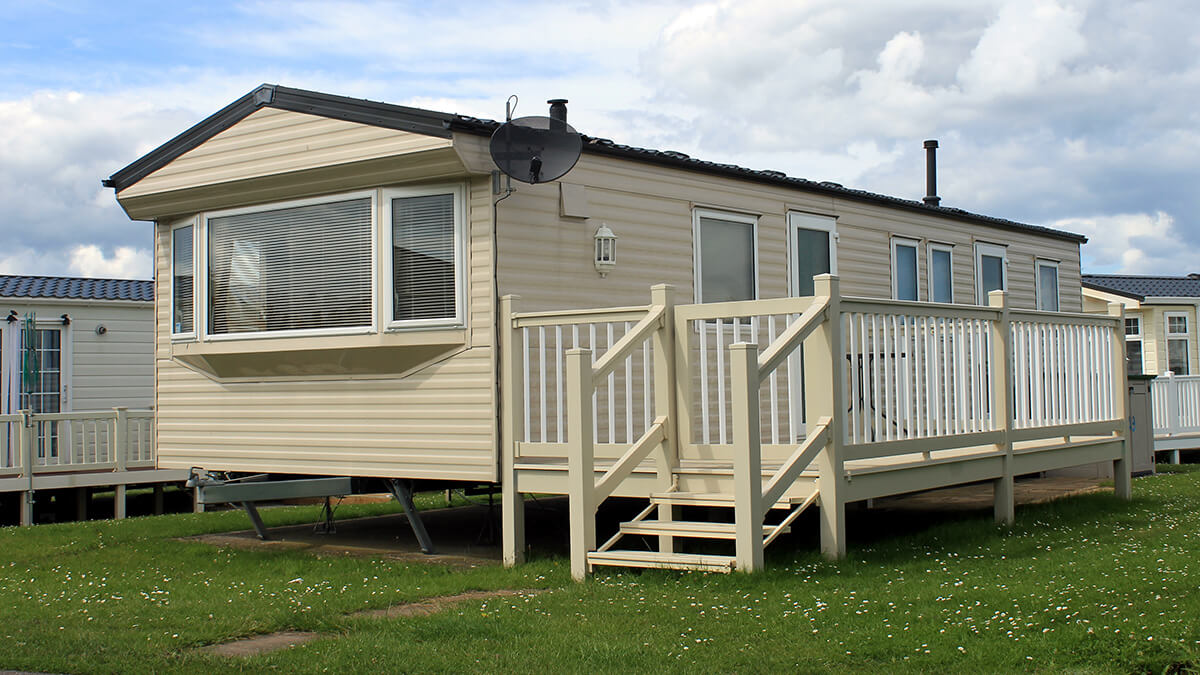Mobile home roof coating guide

Your metal roof needs a new coating every 2 years and touch-ups at frequent intervals, especially after storms have deposited debris or branches on the roof. To coat your roof, select a good quality roof coating.
Consider a reflective (white) coating rather than a gray coating, especially if you live in the southern states. The light colored coating will reflect the sun's rays and reduce your cooling costs.
Materials needed: roof coating, patching cement, diluted chlorine bleach solution and strong detergent (if needed); Tools: wire brush, putty knife, coarse sandpaper, stiff-bristle paint brush, paint roller, broom, garden hose, roof-coating brush.
Step 1: Check Weather
Before you start, make sure rain isn't forecast. The temperature should be over 50 degrees F. Lower temperatures or high humidity will affect the curing process of the roof coating.
Step 2: Inspect
Just because you don't have a leak doesn't mean your roof hasn't deteriorated. Look for blisters, cracked seams and peeling roof coating.
Step 3: Clean
Use a wire brush, coarse sandpaper or a putty knife to remove any flaking roof coating. Pay particular attention to seals around the j-rail, roof seams and flashing. This is an important step because it provides a clean surface for the new roof coating. Use a broom to sweep away loose material.
Step 4: Repair
Use the methods described later in this chapter to repair any splits and patch any holes. Reattach any loose screws. Treat any mildewed spots with diluted chlorine bleach. Then rinse the mildewed area with a strong detergent such as T.S.P.
Step 5: Rinse & Check For Puddling
Use a garden hose to wash your roof. Check for puddles. Determine if the puddles are forming because the house is unlevel, the gutters are clogged or there is an indentation in the surface. Dry off the water, then check the metal for deterioration. Cover this area with a metal primer.
Step 6: Coat Seams
Use a stiff bristle paint brush and cover all seams and edges of flashing with patching cement. Overlap the edges by 1 inch. Also cover any screw heads. It's important that you coat:
- Roof seams. These connect the roof panels and they can pop or split from wind action or from the weight of snow and ice.
- Flashing. Every roof vent, stack or skylight will have a frame or flashing connecting it to the surface of the roof.
- J-rail. Not only is this one of the most common sites for a leak, but a leak here will often run down the inside of your sidewall, causing considerable damage before you even know it exists. The j-rail runs around the perimeter of your roof. This is where all the water runs, which means more wear and tear, and more opportunity for leaks.
Step 7: Coat Roof
Make sure the patching cement has dried. Take a few minutes to thoroughly mix the roof coating.
Apply the roof coating with a roof brush or paint roller designed just for this purpose. Do not use a mop. You cannot control the coverage with a mop.
Carefully follow the instructions on the label for coverage. That is, if a gallon of roof coating covers 100 square feet, measure out a 10 foot by 10 foot area and cover it. This is how thick the coating should be over the entire roof.
Do not thin the coating or apply excessive amounts. You won't improve the water seal by putting on too much. It will dry and crack if it's too thick.
Start at one end of the roof and finish at the other end. Make sure you have a ladder on that end so you can get down.


